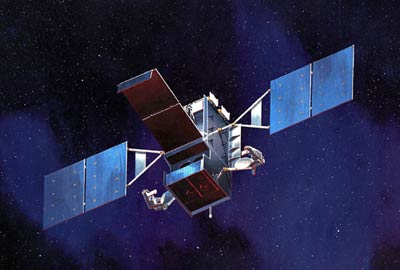Space war: going deepby Taylor Dinerman
|
| Putting military space systems as far away from the Earth as possible seems like a no-brainer, but so far few, if any, experts have examined what such a new approach would look like—at least publicly. |
For early warning and other associated purposes, a new post-SBIRS generation of spacecraft could be designed, building on the work already done for the Advanced Infrared Satellite System (AIRSS). Based in eccentric BGEO orbits, these satellites would be far more difficult to target and attack than the current DSPs, which are, after all, vulnerable to a variety of ASAT systems, both kinetic and non-kinetic. This would require sensors that are far more sensitive than those we can build with today’s technology and having power and propulsion subsystems optimized for operations in such orbits. This should not be beyond the state of the art; certainly it should be possible to build these systems by the middle of the next decade. Civil spacecraft that are built to function at the Lagrange points have to deal with a similar environment and will provide valuable lessons for industry and government.
Moving as many US military satellites out of LEO as possible would have the added advantage of making this orbit less crowded. With few military targets available the incentive for potential US foes to build and test simple direct-ascent ASATs would be diminished almost to vanishing point. This does not mean that they would not do so, only that they would need to think up a new justification.
Commercial operators probably would welcome the absence of US military assets from LEO and GEO. The nightmare scenario of a chain of collisions knocking out one large, expensive commercial communications or remote sensing satellite after another might seem to be diminished if there were no or very few US military spacecraft in any of those orbital slots. They should however be careful what they wish for.
If the US were to successfully migrate most of its military and quasi-military spacecraft out of LEO, MEO, and GEO in the next 10 to 20 years, that area would constitute a sort of “free fire zone” in space. A new generation of US spacecraft—maneuverable, hardened, and stealthy, operating in eccentric, hard-to-predict orbits—would allow the US in wartime to shoot down enemy satellites moving about closer to Earth with no thought given to the effects on its own space assets. This might mean that the US and other space powers might find it profitable to station various types of killer ASATs this area, these would be harder to cope with than direct ascent ASATs or ones stationed in more conventional orbital positions.
In any case, if the US really wants to reduce its current vulnerability in space it will have to rethink the way it designs and operates its orbiting assets. This means that it must seek to protect its own systems by the use of distance and deception, as well as by the use of active defenses. The long-term strategy should be to make it very hard to destroy or degrade US satellites and very easy for the US to hold at risk not only enemy assets but also to make life extremely had for third parties who may believe that they can afford to ignore US interests while still enjoying the benefits of US space superiority.
Many US experts feel that if one or more major US assets, such as the big intelligence gathering satellites, were to be attacked, there would be essentially no effective US response. There is a belief, justified or not, that the US has more to lose from a battle in the LEO to GEO region than any other power. This has the effect of restraining how the US could react to a hostile action.
| Many US experts feel that if one or more major US assets, such as the big intelligence gathering satellites, were to be attacked, there would be essentially no effective US response. |
To begin with there would be the question of attribution: any attacker worth his or her salt would make an effort to disguise the origin of the action. If this were even minimally effective they know that there are literally dozens of political organizations that would seek to prevent or weaken any US response. For the US to threaten instant retaliation for an attack on a US satellite is, as things stand now, an empty one.
If, however, the US were able to effectively threaten the whole of the LEO-to-GEO region, this would push the so-called international community to try and put strong sanctions on bad actors such as North Korea and Iran who might, in the course of attacking the US, end up destroying the utility of near Earth space for everyone.
In the medium term, building LEO-based systems that are hard to detect and hit such as those that may emerge from the Operationally Responsive Space (ORS) program is one good way to make life hard for an attacker. However simply the fact that such satellite will be in LEO makes them vulnerable. However, future ORS-derived systems based in BGEO or even at the weak stability boundary should give future US space warriors options that would allow them to ride out an attack and to respond with carefully targeted violence, kinetic or non-kinetic, against the perpetrator and perhaps also against their allies and supporters.
